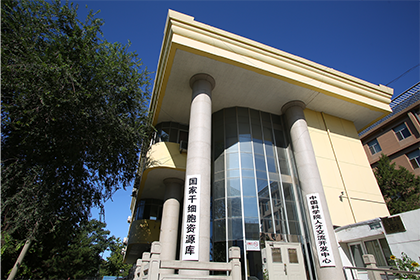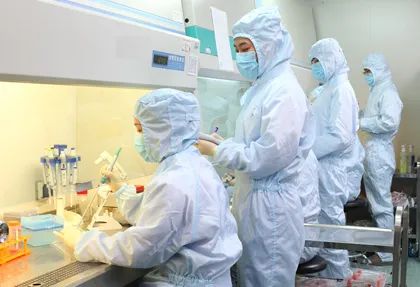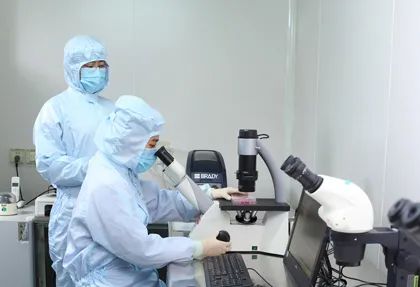
Source: National Stem Cell Resource Bank
The National Stem Cell Resource Bank, formerly known as Beijing Stem Cell Bank, has developed into a national science and technology resource sharing service platform jointly recognized by the Ministry of Science and Technology and the Ministry of Finance since its establishment in 2007. As a part of the national science and technology innovation base for basic support and condition guarantee, the National stem Cell Resource Bank is committed to serving population health and social and economic development, and has become a leading institution in the strategic resource reserve of stem cells.

The resource base has a complete quality management system, which provides strong support for the basic research and application of stem cells. It not only promoted the construction of relevant standards in the field of stem cells, but also contributed to the establishment of the National Stem cell resource Bank Innovation Alliance.
The alliance has 14 members:1. National Stem Cell Resource Bank (Institute of Zoology, Chinese Academy of Sciences) 2. National Stem Cell Transformation Resource Bank (Tongji University) 3. National Biomedical Experimental Cell Resource Bank (Institute of Basic Medicine, Chinese Academy of Medical Sciences) 4. National Model and Characteristic Experimental Cell Resource Bank (Shanghai Academy of Biological Sciences, Chinese Academy of Sciences) 5. South China Cell Transformation Bank (Guangzhou Institute of Biomedicine and Health, Chinese Academy of Sciences) 6. South China Cell and Stem Cell Bank (Academy of Military Medical Sciences) 7. Tumor stem Cell Bank (The First Affiliated Hospital of Army Military Medical University) 8. Reproductive Stem Cell Bank (The Third Hospital of Peking University) 9. Human Stem Cell National Engineering Research Center Stem Cell Bank 10, Blood System disease cell bank 11, Human reproductive and Genetic disease cell Bank 12, Central China Stem Cell Bank (Tongji Hospital) 13, organoid disease Model Bank 14, China Typical Culture Preservation Center (CCTCC)
In addition, the National stem Cell Resource Bank has actively participated in international cooperation, and jointly launched the International Stem Cell Bank Action Plan with stem cell banks in more than a dozen countries, including the United Kingdom, South Korea, Japan and France, to promote the sharing of stem cell resources and technologies worldwide.

In terms of resource reserves, the national stem cell resource Bank has established nearly 3,100 cell lines of different origins and different developmental potentials, and has stored a total of more than 50,000 cell samples. These include China's first clinical grade human embryonic stem cell line, as well as a variety of clinical grade stem cell resources such as dopamine neural precursor cells and mesenchymal cells (M cells). In terms of clinical research, the institute has carried out 11 National Bureau of registration stem cell clinical studies for functional cell therapy from human embryonic stem cells for diseases such as Parkinson's disease, macular degeneration and meniscus injury, as well as 2 phase I/II drug clinical trials approved by the State Drug Administration. During the COVID-19 epidemic in 2020, based on 17 years of research and development results, the team launched a new stem cell drug with independent intellectual property rights - CAStem cell injection, which is used to treat respiratory distress syndrome and pulmonary fibrosis caused by severe COVID-19, and obtained the qualification of phase I/II new drug clinical trial approved by the State Drug Administration. It has become one of the COVID-19 treatment options recommended by the joint prevention and control mechanism of The State Council.

In terms of standardization process: the National stem Cell resource Bank has established a sound quality management system, and successfully passed the "Biobank Quality and Capability Accreditation Guidelines" organized by the China National Accreditation Committee for Conformity Assessment (CNAS) in May 2019 (ISO 20387: 2018, IDT) field review, an achievement that makes it the first standardization repository in the country to achieve ISO 20387 accreditation, as well as a global leader. At the same time, it has led the formulation of 3 international standards, participated in the formulation of 8 international standards, led the formulation of 2 national standards, and participated in the formulation of 4 national standards. In terms of group standards, two have been released, six are about to be released, and seven more standards are in development. Among them, China's first national standard for personal-derived stem cells, released on September 23, 2023, marks a solid step forward in the standardization of China's stem cell field. These efforts not only improve the ability and level of the national stem cell resource pool, but also provide a solid standard support for stem cell research and application in China and even in the world, and promote the progress and development of stem cell science.
National Stem Cell Repository Shared cell list
